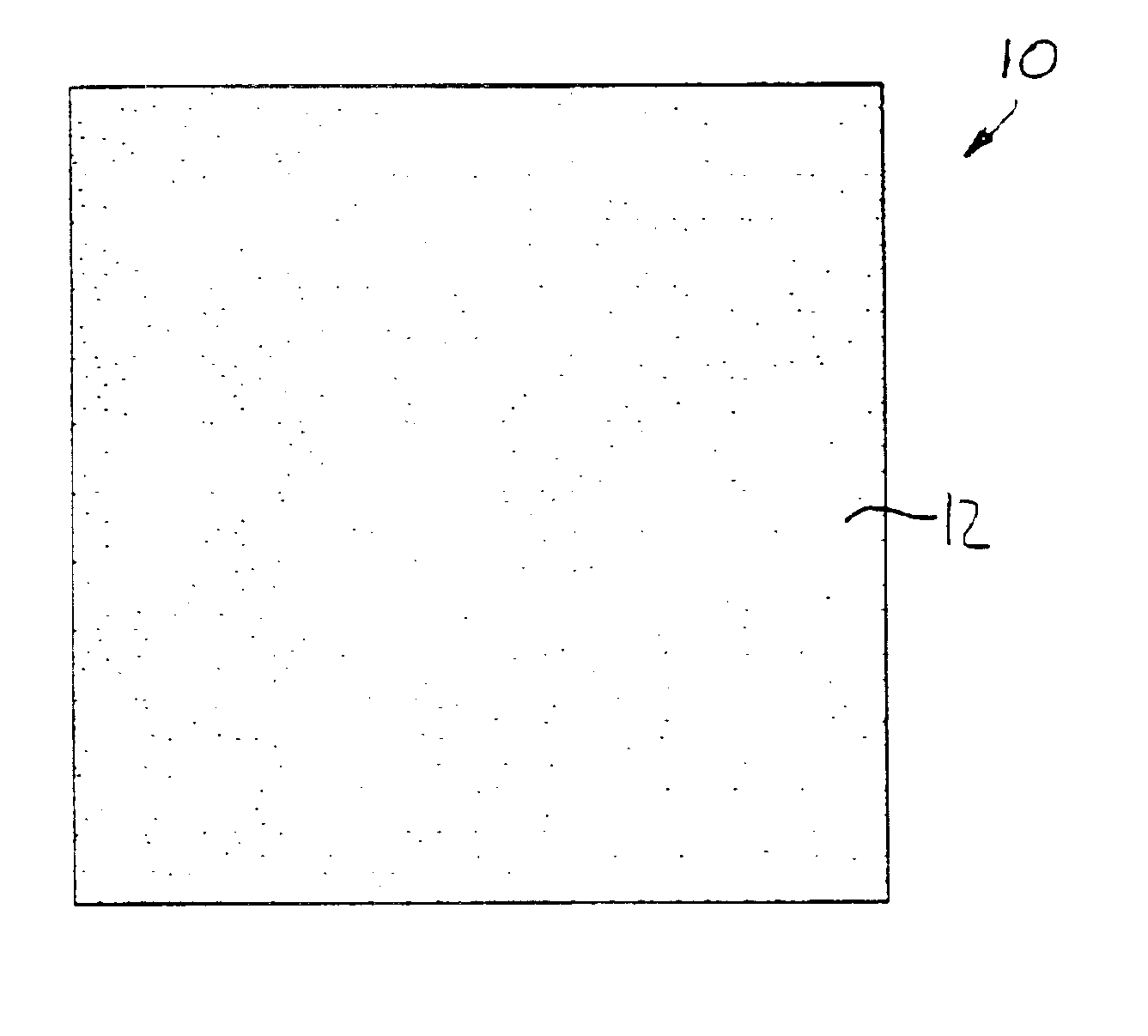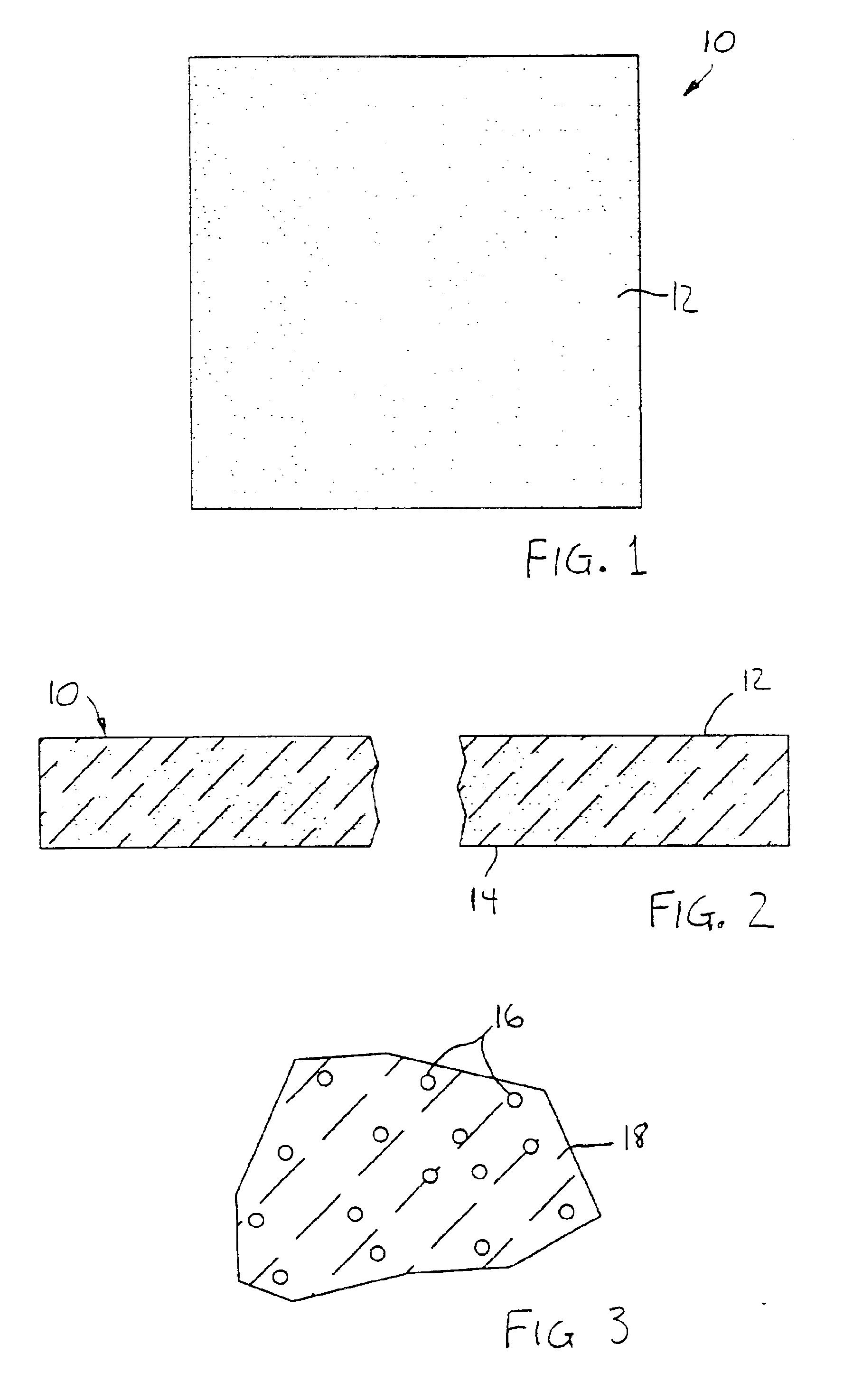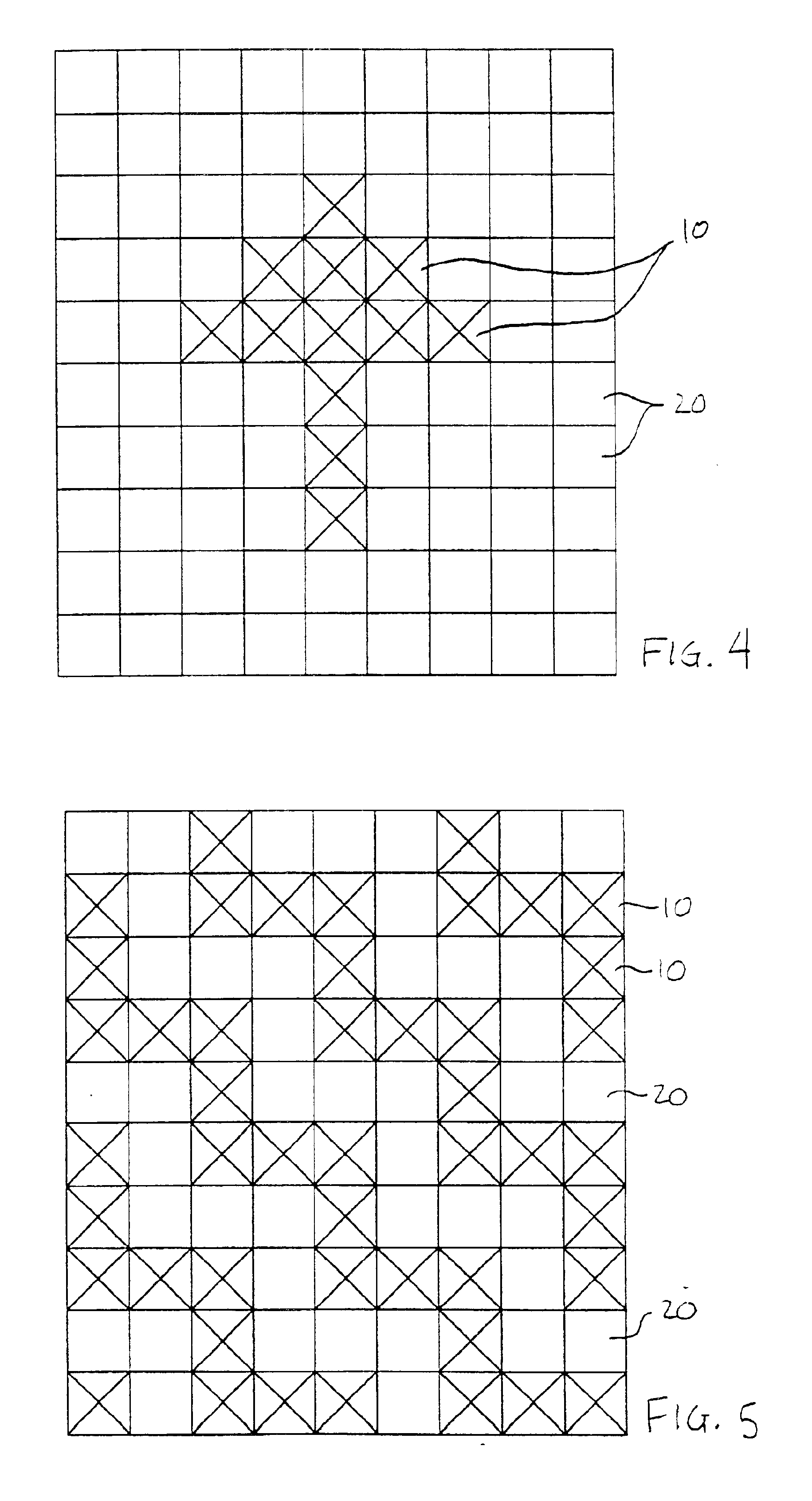Photoluminescent floor tile
- Summary
- Abstract
- Description
- Claims
- Application Information
AI Technical Summary
Benefits of technology
Problems solved by technology
Method used
Image
Examples
first embodiment
FIGS. 1-3 illustrate a first embodiment floor tile 10 in accordance with the present invention. The tile has a top surface 12 and a bottom surface 14. The illustrated tile is 12 inches by 12 inches square and approximately one-tenth of an inch thick. Other embodiments of floor tile can have different shapes or dimensions.
The tile 10 is formed from a tile composition that has photoluminescent particles 16 uniformly disbursed throughout a tile base 18 (the particles 16 are representated as black dots in FIGS. 1 and 2 and represented by circles in FIG. 3). The particles 16 are firmly embedded in the base 18 and together form a rigid floor tile.
The photoluminescent particles 16 preferably consist of a non-radioactive photoluminescent pigment. A suitable pigment is formed from rare earth materials. These photoluminescent pigments are each characterized by low toxicity, short excitation time, high brightness and long glow life. One such pigment is formed from strontium aluminate having a ...
second embodiment
The tile 10 has photoluminescent particles distributed throughout the entire top surface of the tile to present a uniformly illuminated tile in the dark. FIG. 6 illustrates a second embodiment floor tile 110 in accordance with the present invention. The tile 110 is similar to the tile 10 but photoluminescent particles are found only in spaced-apart regions of the tile surface.
The tile 110 includes a first base 112 formed conventionally from limestone filler. The base 112 does not contain photoluminescent particles. Disbursed throughout the base 112 are a number of veins or seams 114. The veins 114 are distributed throughout the thickness of the tile 110 and are formed from a second base 116. The second base 116 is like the base 18 and includes a matrix of photoluminescent particles.
The bases 112 and 116 preferably include contrasting coloring agents to give a mottled appearance to the tile 110. The coloring agents can be the same as used in conventional mottled tile. The base 112 is...
third embodiment
FIG. 7 illustrates a third embodiment floor tile 210 in accordance with the present invention. The tile 210 includes a base 212 like the base 112 and veins 214 similar to the veins 114. The tile 210 has the same composition as the tile 110 and is made the same way except that the crushed pieces forming the veins 114 are mixed in the mixer for only 40 seconds. The resulting tile 210 has a marbled appearance, as represented by the rectangles representing the veins 214.
In other embodiments of mottled tile each of the bases may include a matrix of photoluminescent particles. Under normal lighting the tile would have a mottled appearance. In darkness the entire top surface of the tile would glow.
In other embodiments of the present invention the tile composition may be suitable for manufacturing ceramic tile. A ceramic tile composition is formed from a clay filler mixed with other ingredients, including quartz, kaolin, talc and the like. The mixture is molded into tiles and the tiles are ...
PUM
| Property | Measurement | Unit |
|---|---|---|
| Fraction | aaaaa | aaaaa |
| Fraction | aaaaa | aaaaa |
| Fraction | aaaaa | aaaaa |
Abstract
Description
Claims
Application Information
 Login to View More
Login to View More - R&D
- Intellectual Property
- Life Sciences
- Materials
- Tech Scout
- Unparalleled Data Quality
- Higher Quality Content
- 60% Fewer Hallucinations
Browse by: Latest US Patents, China's latest patents, Technical Efficacy Thesaurus, Application Domain, Technology Topic, Popular Technical Reports.
© 2025 PatSnap. All rights reserved.Legal|Privacy policy|Modern Slavery Act Transparency Statement|Sitemap|About US| Contact US: help@patsnap.com



